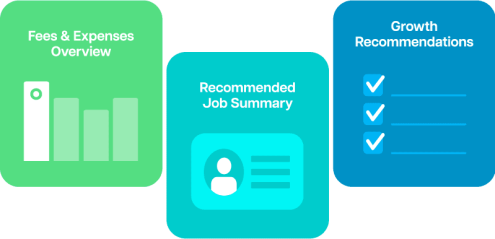Shipping is one of the largest costs for e-commerce businesses in Australia. As the demand for faster deliveries grows, it becomes increasingly difficult to find affordable shipping solutions that don’t compromise on speed of delivery. Customers expect quick, reliable delivery, but at the same time, businesses need to keep costs manageable to maintain profitability.
In this blog, we’ll explore practical strategies to help e-commerce businesses save money on shipping without sacrificing delivery speed. From choosing the right carrier to leveraging technology and offshore outsourcing for logistics management, we’ll cover keyways you can optimise your process while keeping costs low.
Understanding Shipping Costs: Breaking Down the Expenses

To find affordable shipping solutions, it’s essential to first understand the various factors that contribute to costs. Many e-commerce businesses focus primarily on carrier rates but overlook other elements that can add significant expenses. A deeper understanding of these costs helps businesses make smarter choices and optimise their strategies.
E-Commerce Advice for Creating a Seamless User Experience
Package Weight and Size
The weight and dimensions of a package directly influence fees. Shipping carriers typically charge based on both weight and size, with larger or heavier items costing more. To manage these costs, e-commerce businesses should optimise their packaging. Choosing the right-sized box and lightweight materials can significantly reduce costs while still ensuring the safety of the product.
Shipping Distance:
The distance a package needs to travel is another crucial factor. Domestic shipping across Australia may have more predictable costs, but international shipments can quickly become expensive, especially when crossing multiple borders. By working with international carriers that offer competitive rates, businesses can lower expenses on long-distance deliveries without sacrificing speed.
Shipping Carrier Rates and Services
Different carriers offer varying pricing structures and services. Some carriers may have lower rates for certain regions or for bulk shipments, while others provide faster services at a premium cost. It’s essential to compare carrier options to find the most cost-effective service for your business. By negotiating bulk shipping deals or leveraging carrier partnerships, businesses can secure more affordable options that don’t compromise delivery speed.
Fuel Surcharges and Additional Fees
Fuel surcharges, customs duties, and other hidden fees can add up quickly, often without businesses realising it. Fuel surcharges fluctuate with fuel prices, and international shipments may incur additional charges like customs fees. Understanding these fees ahead of time and building them into your cost structure will help you manage expenses more effectively.
Packaging Materials
The type of materials used for packing goods also contributes to costs. Excessive packaging or the use of premium packing materials can increase the total cost of shipping. Choosing lightweight, eco-friendly options that still protect your products can help you keep these expenses in check while also appealing to environmentally conscious customers.
By understanding the breakdown of costs, businesses can make more informed decisions about how to reduce their expenses. In the next section, we’ll explore strategies for balancing cost and speed, ensuring that you get the best value without compromising on customer satisfaction.
User experience (UX) is critical in e-commerce. A smooth, intuitive shopping experience keeps customers happy and drives conversions. If your site is hard to navigate or slow to load, you’ll lose sales.
Tobi Lütke, founder of Shopify, stresses simplicity. His platform makes it easy for anyone to set up their online store with minimal effort. The goal is to reduce distractions and make the shopping process as easy as possible.
Amazon’s Jeff Bezos shares a similar philosophy, prioritising a seamless customer journey. “We’re not competitor-obsessed, we’re customer-obsessed,” he says, highlighting the importance of removing friction for repeat business.
Key Takeaways:
- Optimise for mobile: Ensure your site is mobile-responsive.
- Simplify checkout: Reduce steps and offer multiple payment options.
- Improve speed: A fast website keeps customers engaged.
Shipping Strategies to Reduce Costs Without Losing Speed

When it comes to e-commerce shipping, finding the balance between costs and shipping speed is crucial for both customer satisfaction and profitability. Implementing the right shipping strategies can help businesses reduce expenses while ensuring timely delivery. Here are some practical strategies that can optimise both cost and speed:
1. Optimise Shipping Routes
One of the most effective ways to cut costs without affecting delivery speed is by optimising your shipping routes. By using route-planning tools and software, businesses can streamline delivery paths and reduce travel times, which can lead to lower fuel costs and faster deliveries. This is especially important for domestic shipping within Australia, where optimised routes can cut down on delays and unnecessary costs.
2. Negotiate Bulk Shipping Rates
Negotiating with carriers is a powerful tool for lowering costs. Many carriers offer discounts for businesses that ship high volumes. By consolidating shipments and negotiating better rates with your chosen shipping carrier, you can secure more affordable prices. This is particularly beneficial for growing e-commerce businesses that are beginning to scale.
3. Leverage Flat-Rate Shipping
If your e-commerce business ships a variety of products with similar weight and size, opting for flat-rate shipping can provide cost savings. Many carriers offer flat-rate boxes or services that charge a fixed fee, regardless of weight or distance. This can be an excellent way to avoid fluctuating costs, especially for businesses with a predictable shipping model.
4. Offer Multiple Shipping Options to Customers
Customers appreciate flexibility and offering them a choice between standard and expedited shipping can help businesses manage costs more effectively. For example, you could provide an affordable standard option and a faster premium service for customers who need quicker delivery. This approach allows businesses to recoup additional costs from customers willing to pay more for faster delivery while still offering a cost-effective alternative for those who are price sensitive.
5. Take Advantage of Free Shipping Thresholds
Offering free shipping is a common tactic used to increase conversions, but it can also eat into profits if not managed well. One way to offer free shipping without taking a hit is by setting a minimum order value that qualifies for the offer. This encourages customers to buy more while offsetting the costs. This strategy works particularly well when combined with optimised shipping strategies and bulk shipping rates.
6. Use Local Warehouses and Distribution Centres
For businesses shipping to a wide geographical area, utilising multiple local warehouses or distribution centres can reduce delivery times and costs. By storing products in strategic locations closer to customers, businesses can lower the cost of long-distance shipping and offer faster delivery times.
By implementing these shipping strategies, businesses can effectively reduce costs while maintaining customer satisfaction with timely deliveries. In the next section, we’ll explore the critical role of shipping and logistics management and how offshore outsourcing can further optimise your shipping operations.
Shipping and Logistics Management: Optimising Costs and Speed Through Offshore Outsourcing

Effective shipping and logistics management is crucial for maintaining both ideal shipping speed and cost-effectiveness. However, managing these can become overwhelming, especially while yourbusiness grows. This is where offshore outsourcing can help streamline operations, reduce expenses, and ensure faster deliveries.
Key Benefits of Offshore Outsourcing in Shipping and Logistics Management:
Cost Reduction
Offshore outsourcing allows businesses to take advantage of lower labour costs in other countries. By outsourcing logistics functions such as order processing, inventory management, and even customer service, businesses can reduce overhead costs. These savings can be reinvested into other areas of the business, such as improving shipping speed or investing in better packaging.
Access to Expertise in International Logistics
International shipping can be complex, with varying customs regulations, tariffs, and local delivery standards in different regions. Offshore logistics partners often have deep expertise in navigating these complexities. This expertise ensures that international shipping solutions are handled efficiently, reducing the risk of delays and optimising shipping speed without incurring additional costs.
Scalability During Peak Seasons
Offshore outsourcing provides businesses with the flexibility to scale logistics operations quickly. During peak seasons, such as the holidays, e-commerce businesses can experience an influx of orders. By outsourcing logistics, businesses can tap into additional resources without the need to hire or train more staff locally. This scalability ensures timely shipping even during the busiest periods, all while keeping costs manageable.
24/7 Operations and Real-Time Tracking
Offshore logistics partners often operate in different time zones, which means that they can provide 24/7 support and real-time tracking of shipments. This level of oversight ensures that any delays or issues are identified and addressed immediately. Additionally, customers can receive updates on their shipments at any time, leading to a better overall experience and faster shipping speed.
Focus on Core Business Operations
Outsourcing shipping and logistics management to offshore partners allows e-commerce businesses to focus on core activities such as product development, marketing, and customer acquisition. By offloading logistics responsibilities, businesses can dedicate more time and resources to growing the business while ensuring that their shipping solutions remain efficient and cost-effective.
Enhanced Customer Service
Offshore partners can also assist with customer service, providing support for order inquiries, tracking, returns, and refunds. With the right offshore outsourcing provider, businesses can ensure that customers’ questions about their shipments are answered promptly, improving the overall customer experience and satisfaction with shipping speed.
By leveraging offshore outsourcing for shipping and logistics management, e-commerce businesses can optimise operations, reduce costs, and maintain efficient delivery times. The next section will explore how to choose the right shipping carrier for your business.
Choosing the Right Shipping Carrier for Your E-commerce Business

Selecting the right carrier is key to optimising both costs and delivery speed. Here are the key factors to consider when making your choice:
- Shipping Rates: Compare rates from different carriers, including any volume discounts. Look for hidden fees like fuel surcharges or delivery area surcharges.
- Delivery Speed: Balance cost and speed. Choose a carrier that offers a reasonable delivery time that matches customer expectations, whether it’s standard, expedited, or same-day service.
- Tracking and Support: Ensure the carrier provides robust tracking options and a good customer support to resolve any potential shipment issues quickly.
- Geographical Coverage: Make sure the carrier can service all the regions where your customers are located, both domestically and internationally.
- Reputation and Reliability: Choose a carrier with a proven track record for timely deliveries and handling issues efficiently, ensuring customer satisfaction.
- Additional Services: Consider if the carrier offers value-added services like returns management, insurance, or packaging options.
Choosing the right shipping carrier is crucial to keeping costs low while ensuring timely deliveries. The next section will explore how packaging can play a role in reducing shipping expenses and improving delivery speed.
The Role of Packaging in Affordable Shipping
Packaging plays a vital role in controlling costs and ensuring timely deliveries. By optimising your packaging approach, you can save money while maintaining product safety and customer satisfaction.
1. Use the Right Size Packaging
Choosing the correct size box for your product can prevent unnecessary costs. Oversized packaging increases shipping fees and delays delivery. Ensuring your packaging fits the product perfectly will reduce both costs and improve delivery speed.
2. Choose Lightweight Materials
Selecting lightweight materials such as bubble wrap or air pillows helps reduce the overall weight of the package. This will lower the cost of shipping while still providing adequate protection for your products.
3. Consider Eco-friendly Packaging
Eco-friendly materials such as biodegradable packaging or recycled paper can make your shipping more sustainable and appealing to environmentally conscious customers. These materials are often lighter, which helps lower costs.
4. Custom Packaging for Protection
Custom-designed packaging tailored to your product ensures better protection and reduces the likelihood of damage during transit. While this may come with a higher upfront cost, it can save money by preventing returns due to damaged items.
5. Avoid Excessive Packaging
Over-packaging not only adds unnecessary weight but also inflates your shipping fees. Opt for minimal, efficient packaging that protects the product without overdoing it, and help your business reduce costs.
Optimising packaging is an effective way to lower costs and improve efficiency in your e-commerce operations.
Conclusion: Maximising Profits with Affordable Shipping Solutions
In the competitive world of e-commerce, shipping often represents a significant portion of your operational costs. However, by implementing the right strategies, such as optimising routes, negotiating better rates with carriers, and using offshore outsourcing for logistics, you can reduce costs without compromising speed or customer satisfaction.
Efficient packaging, leveraging technology, and selecting the right carrier are all essential components of a comprehensive shipping strategy that maximises profitability. By understanding and managing costs strategically, you can offer faster delivery options while maintaining a cost-effective approach that benefits both your business and your customers.
Affordable shipping is not just about cutting costs; it’s about creating a seamless, efficient process that ensures your customers receive their orders quickly and reliably, which ultimately drives customer loyalty and increases repeat business.
Staff Domain’s offshore outsourcing solutions connect your business to a highly experienced global talent pool for game-changing results. Manage your offshore workforce effortlessly with our comprehensive compliance, payroll, and HR support, and benefit from fixed, transparent pricing in your local currency. Contact us today or schedule a meeting with our Sales team to quickly source the right offshore team for your business.
(FAQs) About Affordable Shipping Solutions for E-commerce
1. How Can I Reduce Shipping Costs for My E-commerce Business?
Reducing costs requires a combination of strategies. You can negotiate better rates with carriers, optimise your packaging to reduce weight and size, and use cost-effective methods. Additionally, leveraging offshore outsourcing for logistics and order fulfilment can help lower operational costs while ensuring fast delivery.
2. Is Offshore Outsourcing Effective for Managing Shipping and Logistics?
Yes, offshore outsourcing can be highly effective in managing shipping and logistics. It allows businesses to tap into lower labour costs while gaining expertise in global logistics. Offshore partners can help with inventory management, order fulfilment, and optimising delivery routes, reducing overall costs without sacrificing speed.
3. What Are the Best Shipping Carriers for E-Commerce Businesses?
The best carrier depends on your specific needs, such as delivery speed, budget, and geographical coverage. Popular options for e-commerce businesses in Australia include Australia Post, Sendle, and CouriersPlease for domestic deliveries, and international carriers like DHL, UPS, and FedEx for global shipments. It’s important to compare rates and services to find the best fit for your business.
4. How Does Packaging Affect My Shipping Costs?
Packaging plays a significant role in costs. Using oversized boxes, heavy packing materials, or excessive packaging can increase both weight and size, which drives up expenses. By choosing the right-sized packaging, using lightweight materials, and avoiding unnecessary packaging, you can significantly reduce costs while ensuring product safety.









